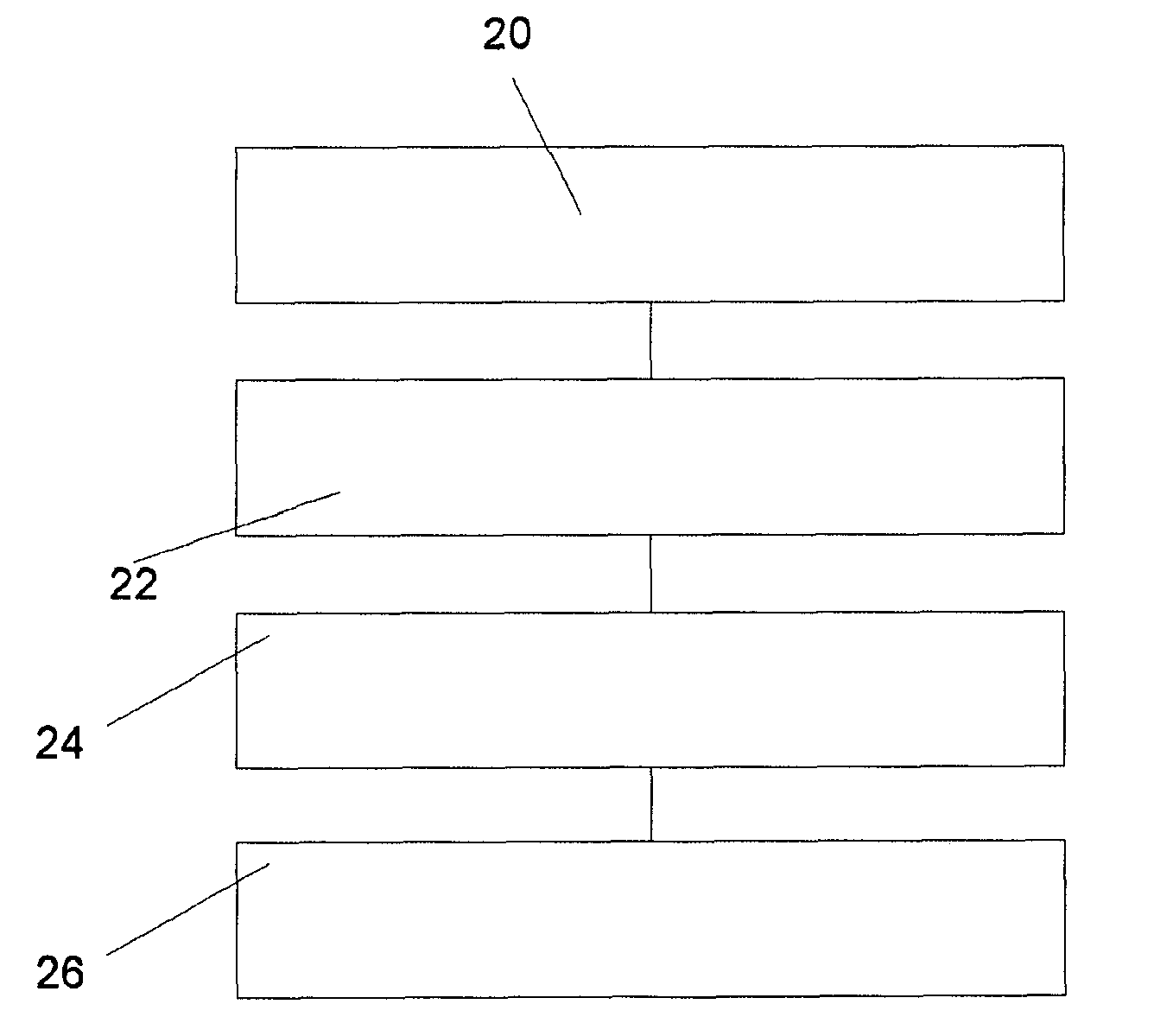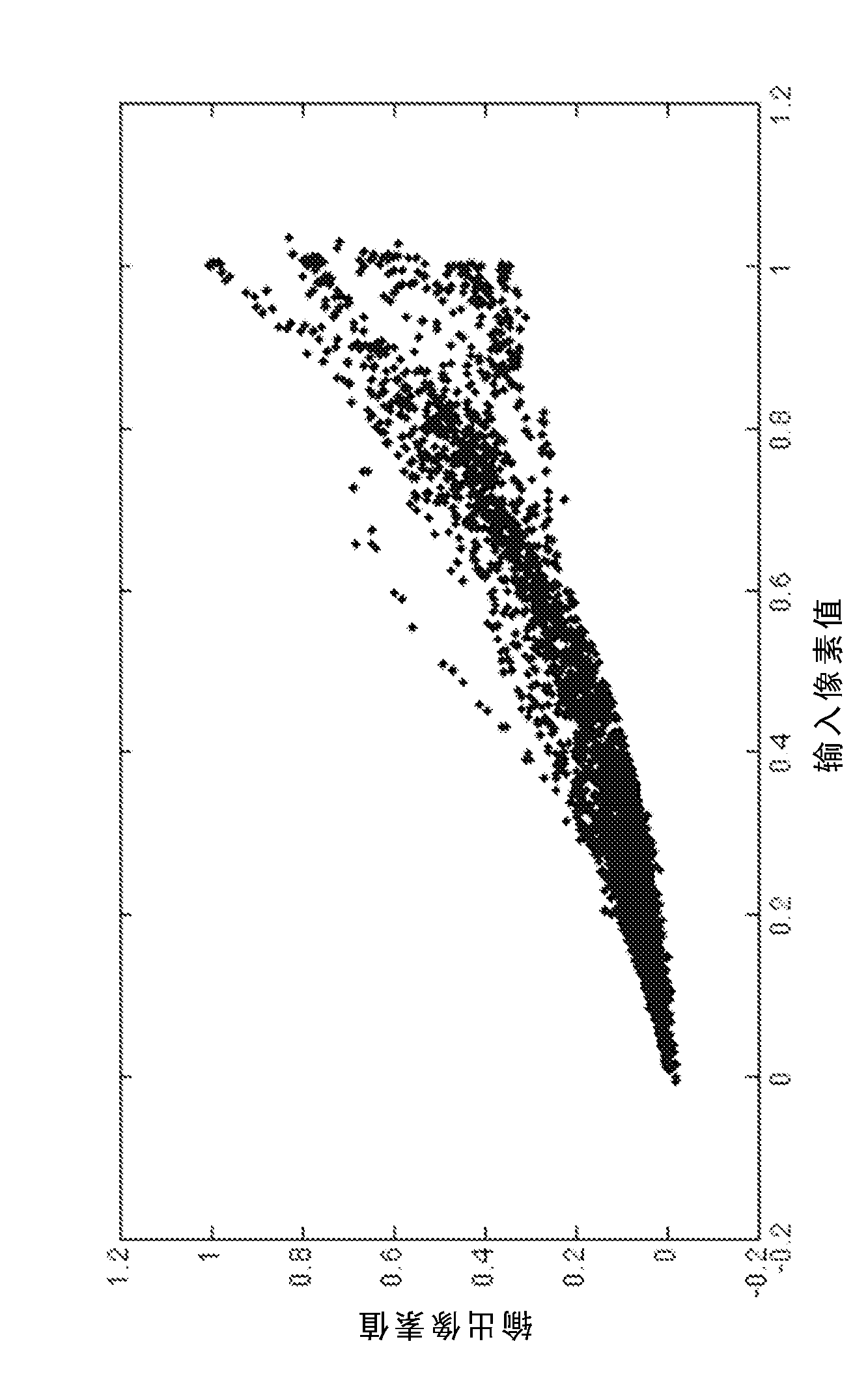Method and system for generating enhanced images
A technology for image enhancement and image generation, applied in image enhancement, image analysis, image data processing, etc.
- Summary
- Abstract
- Description
- Claims
- Application Information
AI Technical Summary
Problems solved by technology
Method used
Image
Examples
example 1
[0128] Example 1: Remove Vignette
[0129] exist Figure 5 In (a), we show high-frequency grayscale targets. exist Figure 5 The effect of strong vignetting is shown in (b). To remove vignetting, we apply (11), in which case we use the perfect graph image as output and the warped counterpart as input, to find the calibration function ψ. In this example, we find an approximation function that best maps the natural logarithm of the input image to the natural logarithm of the output image. Apply the function again to the Figure 5 (b) (we apply to Figure 5 (b) and exponentiating the result), we obtain the rectified image 5(c). Now that we have the approximate function, we consider the vignetted image 5(d) and correct it to remove the vignette 5(e) (the undistorted image of the parrot is one of the Kodak test images http: / / r0k.us / graphics / kodak / ). We repeat this experiment, but now find the approximate function ψ using the 16th resolution calibration image (also performi...
example 2
[0130] Example 2: Dynamic Range Compression
[0131] exist Figure 6In (a), we show an underexposed parrot image. Dynamic range compression (DRC) algorithms attempt to map a large luminance input range to a smaller luminance range (eg, the luminance range of a display device). One of the simplest DRC algorithms is to divide the original image by the local average of nearby pixels. This operation is usually performed in logarithmic space. That is, we take an image, and calculate the logarithm of the pixel value. Then, by convolution, we compute local averages. In this example, we convolve using an inverse exponential filter with a standard deviation that is 1 / 8 the size of the horizontal dimension of the image. In logarithmic space, division becomes subtraction. Therefore, we subtract the local average from each logarithmic pixel value. Now we exponentiate. We then divide the image by the global maximum (in this case defined as the 99% quantile) for display. This last ...
PUM
 Login to View More
Login to View More Abstract
Description
Claims
Application Information
 Login to View More
Login to View More - R&D
- Intellectual Property
- Life Sciences
- Materials
- Tech Scout
- Unparalleled Data Quality
- Higher Quality Content
- 60% Fewer Hallucinations
Browse by: Latest US Patents, China's latest patents, Technical Efficacy Thesaurus, Application Domain, Technology Topic, Popular Technical Reports.
© 2025 PatSnap. All rights reserved.Legal|Privacy policy|Modern Slavery Act Transparency Statement|Sitemap|About US| Contact US: help@patsnap.com



